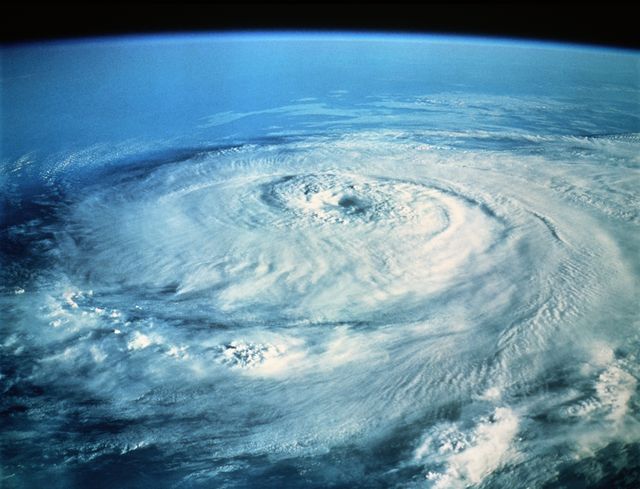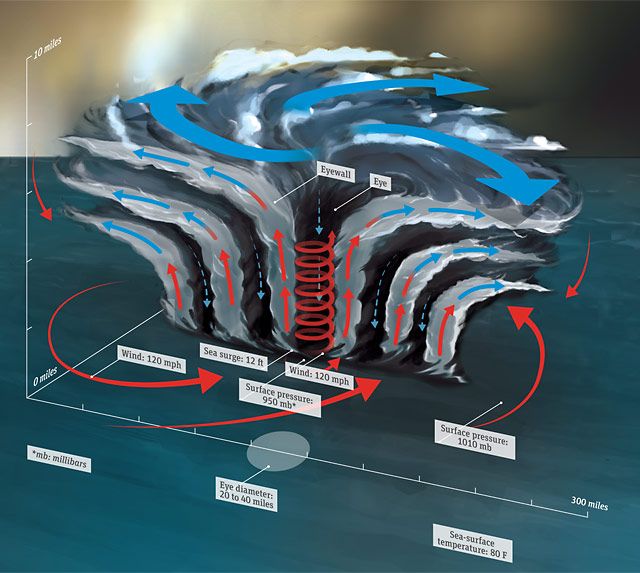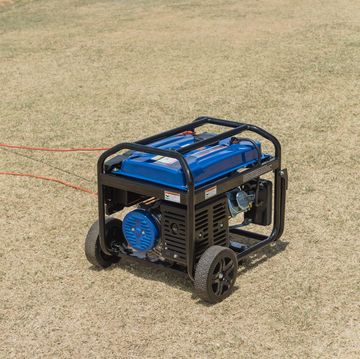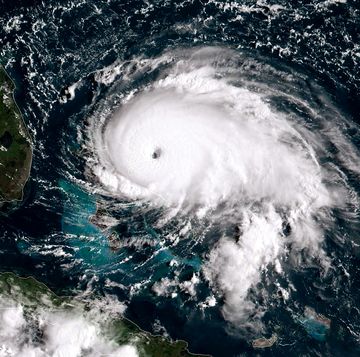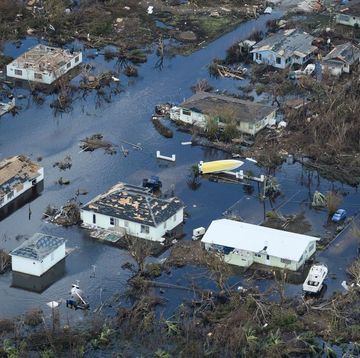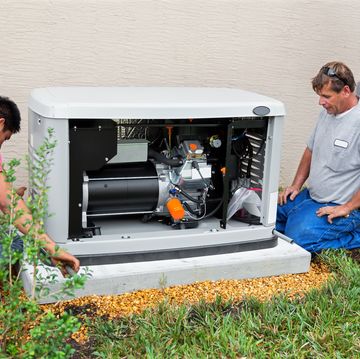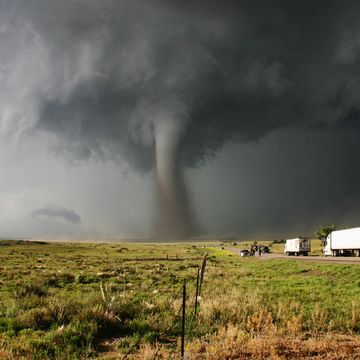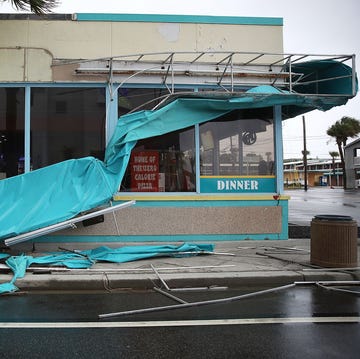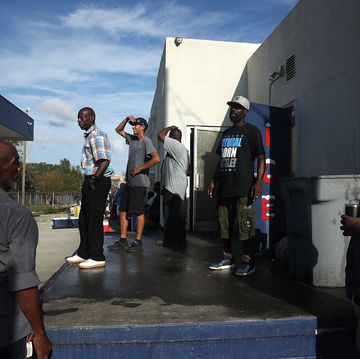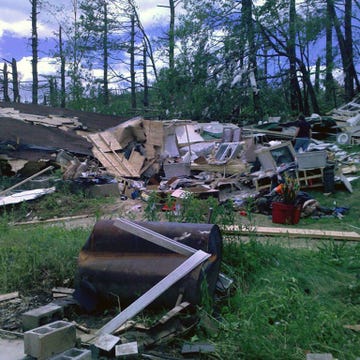As of Monday, September 10, 2018, Hurricane Florence was just a relatively small storm circling way out in the Atlantic Ocean. But the National Hurricane Center is already sounding off serious warnings. This storm is coming for the U.S. Eastern Seaboard, and it is coming with a fury.
While Atlantic hurricane season officially begins in June, August and September see the warmest sea temperatures in the Atlantic. That means means lots of fuel for a hurricane, which is why Florence looks so dangerous as it proceeds along its projected path toward the Carolinas.
Want to know more about how hurricanes form and strengthen? Here's the science. (And if you're in the path of Florence, be cause to peruse our last-minute checklist for hurricane prep.)
Heat Engine: Hurricanes are massive dynamos powered by the evaporation of water and its subsequent recondensation into clouds and rain. Each gallon of water that evaporates and condenses carries about as much thermal energy into the atmosphere as that contained in 1 cup of gasoline.
Hotspot: Hurricanes spawn over patches of ocean where the surface water has warmed to at least 80 F down to a depth of at least 160 feet. Ocean water evaporates in these hotspots and the moist air rises.
Updraft: The rising of warm, moist air creates a low-pressure zone, pulling in more air from nearby areas, which also moistens and rises. The continued updraft is fed by condensation of evaporated water into clouds and rain. The condensation dumps energy back into the air, warming it and making it more buoyant.
Spiral: Surrounding air flows into the low-pressure zone in a spiral pattern. This inward-spiraling air forms the hurricane's destructive winds. The direction of the spiral is determined by the Coriolis effect—a byproduct of the Earth's rotation.
Sinking: Air is ejected from the top of the storm at an altitude of about 40,000 feet. This cooled, dried air sinks through the eye of the storm or else flows out and sinks in the outer bands of the storm, forming areas without rain.
Magnitude: At its peak, a hurricane can dump 5 cubic miles of rain per day and unleash thermal power (freed by condensation of that water) at a rate of 6 x 1014 watts—equal to 200 times the amount of electricity generated by humans worldwide. Only about 0.25 percent of this power is converted to wind.
Effects: In addition to destructive winds, hurricanes can pile up sea surges higher than 20 feet (which are responsible for most deaths). Even after winds dissipate inland, rain can cause flooding for days—as happened with Hurricane Mitch, whose floods and mudslides killed nearly 20,000 people in Central America in 1998.
This story first appeared in the August 2011 issue of PM.
